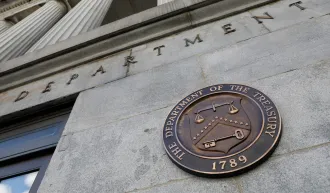California Redistricting Panel Calls on Citizens Like Cynthia Dai, MBA ’93
Californians are trying a new way of drawing district lines, and Cynthia Dai, MBA ’93, is a key player.
November 07, 2011
The last time California redrew the district boundaries for the state government and U.S. Congress, Bill Hughes, MBA ‘54, felt disenfranchised.
His neighborhood association in San Jose’s Berryessa district had been established partly to promote two-way communication between elected officials and the community. Politicians, including the area’s state assembly member, attended the group’s meetings. “We would find out what was going on and be able to have a little input,” Hughes said.
In 2001, during the redistricting, the area was split among four assembly districts. The new state representatives told a subsequent meeting, “you have four representatives now,” Hughes recalled. “Well, it didn’t work out that way. We never saw them again. They send plaques, but we’d rather see them.”
Hughes and some of his neighbors no longer believed that anyone was listening. So “for 10 years, I’ve been working on redistricting.”
Now Californians are trying a new way of drawing district lines, and Cynthia Dai, MBA ‘93, is a key player. One of 14 members of the California Citizens Redistricting Commission, she faced 36,000 competitors for the job when she applied in 2010.
The commission was authorized in 2008 when a majority of state voters, apparently fed up with the partisan way political actors draw districts to benefit themselves, passed Proposition 11. The commission initially was charged with drawing district lines for the state Assembly, Senate, and Board of Equalization, but in 2010, voters expanded the commission’s responsibilities to include U.S. congressional districts. Whether it will accomplish what voters intended is open to debate, political scientists and other observers say. Dai herself won’t offer any opinions on the commission’s decisions, citing the crucial need to maintain the commission’s objectivity.

2001 California state senate redistricting map

2011 proposed California state senate redistricting map
The idea was to avoid a repeat of 2001. In that case, “after a four-month hearing process, the legislature went behind closed doors and drew the lines they really wanted,” said Kathay Feng, executive director of California Common Cause, which advocated creating the commission. The districts were drawn “to bring in their favorite donor, or to extend a finger a couple of blocks to bring in, let’s say, the house of a chosen potential successor for a district, or to skirt around a challenger,” she said.
Voters charged the new commission with creating districts that meet constitutional requirements for equal population and that comply with the federal Voting Rights Act. After those requirements were met, the commission was to satisfy the following criteria (in order), where possible: make districts contiguous; respect county and city boundaries, as well as neighborhoods and communities of interest; make districts compact; and nest two assembly districts into one senate district, and 10 senate districts into one Board of Equalization district.
Commissioners were forbidden to consider where incumbents or candidates live, or to favor or discriminate against an incumbent, candidate, or party. In August, the commission approved new boundaries for all the districts, which do not need approval from the legislature or governor but, like any law, are subject to court challenges.
Dai first learned about the redistricting commission when researching the ballot initiatives before voting in 2008. “I thought, this is a really great idea, and it seems to correct a pretty fundamental flaw in our democracy.”
Her professional background was not in politics, though she had been active in student government at the University of California at Berkeley while earning her 1988 bachelor’s degree in electrical engineering and computer science. “We had political parties, we had causes, we had backroom deals,” she said. “It was a very good introduction to what real-life politics would be like.”
After graduation, she worked for Sun Microsystems in marketing and business development, having decided early on that the solitary work of pure engineering was not for her. She found jobs where “they appreciated my degree, but I actually got to interact with people.” Then her interest in entrepreneurship led her to Stanford for her MBA and to a series of startups. While at business school, she also started a consulting business, helping companies with marketing strategy and interim executive management, which she continues to run in San Francisco.
Thousands applied for the new commission, perhaps because “to throw your hat in the ring literally took less than 5 minutes,” Dai said. Applicants answered questions to make sure they had been registered with the same political party continuously for the past five years and didn’t have conflicts of interest. Anyone who hadn’t voted in two of the past three statewide elections was eliminated.
“I thought, ‘Wow, they’re setting the bar higher than running for governor,’” Dai said. “While I was being vetted, the Bureau of State Audits was calling me, asking about stuff from Google searches. I remember in a panic doing a Google search on myself, realizing that that’s what they were doing. Fortunately what came up were a lot of Stanford ACT [GSB Alumni Consulting Team] videos of me talking about why I volunteered and how to run a good team meeting.”
The 28,000 people who made it through the first round of vetting were given a supplemental application that was “like applying to grad school,” Dai said, with career and family histories as well as numerous essays.
Then the “serious vetting process” began with a panel of three randomly chosen auditors from the Bureau of State Audits. The review panel read the applications of the 4,500 people who completed it, looking for people who could be impartial, who understood California’s geographic and ethnic diversity, who had strong analytical and communication skills, and who could work well in a group. Being able to analyze complex data and then defend the group’s decisions is critical, Dai said, because “we expect to have litigation.”
The panel winnowed the pool to 120 semifinalists: 40 registered Democrats, 40 Republicans, and 40 from other parties or who “Decline to State.” (Dai is a Democrat.) The semifinalists were invited to a 90-minute interview with the applicant review panel, which then cut the group to 60 (20 from each category).
There followed what Dai called “the only nontransparent part” of the process: The majority and minority leaders from the state Assembly and Senate were each allowed to strike two people from each of the three groups. Together, they eliminated 24 people.
On Nov. 18, 2010, the panel held a lottery to assign eight of the remaining 36 candidates to the commission. Dai was in line at the San Francisco airport on her way to China to speak at a conference when she got the call saying her number had been picked. The first eight members then chose the other six commission members from the pool.
Commissioners are paid $300 a day when they’re working, and they can’t run for political office for 10 years. (The total cost of the commission is about $4.25 million.)
“That got rid of anybody who was using it for a political stepping stone,” Dai said. “I personally had to think about that. I’m at the stage of my life where I would consider running.”
Feng said she was “incredibly impressed with the caliber of the candidates who originally applied and the process that really narrowed it down to the best and brightest and also produced a very diverse pool.”
The commissioners first had to create a process to do their work. They decided to hold meetings — 34 in all — all over the state to hear from citizens. Commissioners learned about industries that tie communities together, from aerospace to agriculture. They heard about topography, such as mountain ranges that separate communities.
At a May meeting in San Jose, about 150 people waited for their 2-minute turns to address the commission. Hughes was one of several speakers making the case for keeping the Berryessa neighborhood together. He had arrived at 4:45 for the 6 p.m. hearing and was speaker No. 10. The commissioners also heard impassioned comments about the appropriate use of race in drawing district lines. The federal Voting Rights Act means there are certain areas of the state where the commissioners have to take race into account, making sure not to either split up a minority community so it can’t ever elect a representative or dilute a group’s voting power by putting all its members into one district.
Dai said one of the biggest adjustments to being on the commission has been the legal requirement that the commission conduct all its business in public. Unlike a private board, where “you have your pre-conversations before the meeting so you know how the vote is going to go,” the commissioners can’t discuss their work except in public.
Beyond the logistics of the commission’s work are unanswered questions about its impact.
Jonathan Rodden, associate professor of political science at Stanford, said the commission probably would prevent “really cynical” gerrymandering designed exclusively to protect particular incumbents.
But he said the public is probably expecting more than that. Creating compact districts that keep communities of interest together is likely to lead to districts that tilt toward one party or the other, even if no one looks at the party registration while creating the district. “If you’re trying to make districts where people feel that they have a lot of things in common, one of the things they’ll have in common is partisanship,” Rodden said.
This raises a fundamental question: “How much of what we see that we don’t like in terms of noncompetitive districts and electoral bias is just a function of geography, and how much is gerrymandering? The assumption, I think, has always been that gerrymandering has been the problem. But some of these problems will not go away just because we’ve given some smart experts the job of drawing the districts,” Rodden said.
As for the effect on public policy, that depends partly on how policy is actually made. For example, what is the effect of splitting a city into different districts? Hughes thought the lack of communication hurt his neighborhood. But that might not always be the case.
“Would you rather have one person who strongly advocates for what you want, or would you rather have three people who have a stake in it?” said Kenneth Shotts, the David S. and Ann M. Barlow Professor of Political Economy at the GSB. “If building coalitions is important, it might be better to have several folks who care somewhat about it.”
When the commission approved its final maps, not everyone liked the result. But the commission’s transparency may have made the medicine go down better for the electorate as a whole. As Dai said during a break in the San Jose hearing last summer, “We hope people understand even if they’re not happy.”
First appeared in Stanford Business Magazine Online, Autumn 2011
For media inquiries, visit the Newsroom.
Explore More

Nine Stories to Get You Through Tax Season

Public Pensions Are Mixing Risky Investments with Unrealistic Predictions



